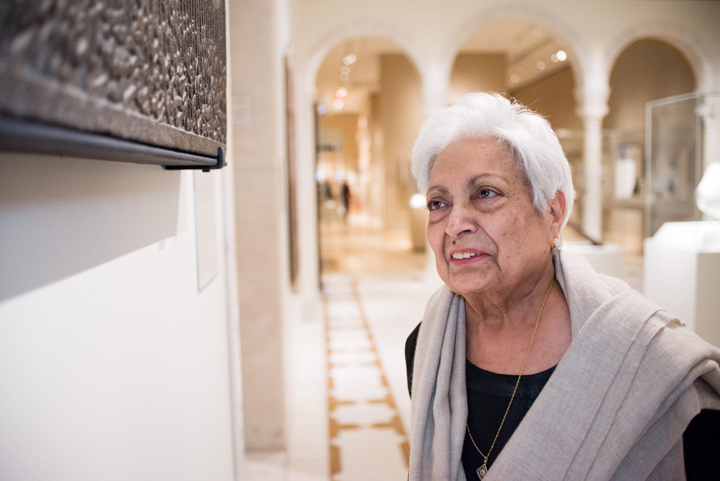Zarina, a beloved Artist who crafted poetical ‘Art’ in different mediums, was honoured and remembered last day worldwide. Zarina Hashmi was an Indian-American artist celebrated for her works encircled with printmaking, drawings, lithography and sculpture, more as an associate of the Minimalist movement and the narration of abstract and geometric patterns and forms.
Zarina was born into an upper-class family; her father was a professor at Aligarh Muslim University, and she used to study printmaking in different countries when she travelled with her foreign service diplomat husband in Thailand, Paris and Japan. She learned as many techniques in printmaking and used them as an amalgamation to articulate her home, the Urdu language, family memories, displacement, and borders as subjects.
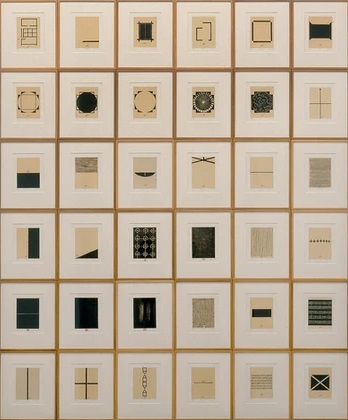
Portfolio of 36 woodcuts with Urdu text printed in black on kozo paper and mounted on Somerset paper | Credit: Zarina.work
India-Pak Partition shifted her life and work; her family was displaced and forced to migrate to Karachi during the separation. That memory of displacement and migration fills her with sorrow and grief that she witnessed in both borders and suddenly separated countries. People who relocated to both countries lost their homeland; they lost their souls, and boundaries split them into pieces. Zarina’s works always bring back this pain of lost home with her miniature form of homes which she noticed in different locations she travelled. Zarina is a printmaker and miniature artist who blends many notable elements of the houses and cities she had resided in an abstract tone in her unique woodcut and intaglio prints. She often uses Urdu inscriptions, illustrating motivation from Islamic Art, and her works feature alluring geometric details.
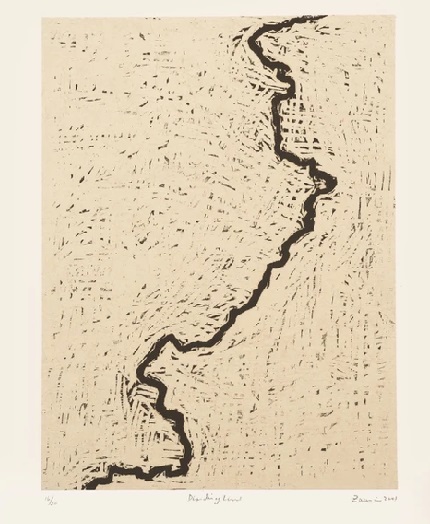
Zarina intends to do something for women, and she plays a pivotal role in the New York Feminist Art Institute as a faculty and women’s rights activist who raises women’s voices. Her curatorial project, titled “Dialectics of Isolation: An Exhibition of Third World Women Artists of the United States”, brings global attention to Zarina’s activism and work of Art.
Urdu: A Visual Language
The essential element of Zarina’s work is her language, Urdu, which she is fond of, as a political tool to address the changing role of vocabulary in human culture. How the language affected and reflected in her life after the painful realisation of Partition, and that element is reflected in her works too. Zarina creates miniature forms interlinking with the history of human culture, nation, the memory of women, the autobiography of lost land and the inhabitants, and the pain of migration. What is a country for an artist? The lost land of a language or the terrain that brings the notion of belongingness?
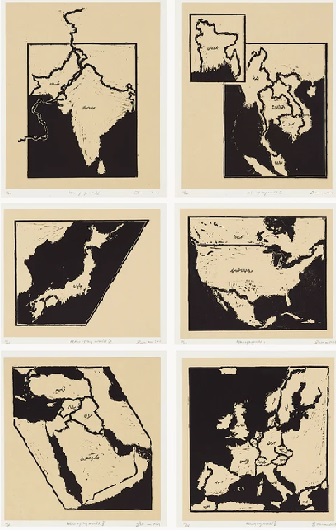
When Zarina turns to Urdu poetry for inspiration? The answer to this question is led us to the political tyranny of landscapes, which starts somewhere in a historical context. In Santa Cruz (1996), Zarina uses an Urdu poem by Faiz Ahmed Faiz to portray her in the art world; in Road Lines (1996), she uses an Urdu poem by Iqbal. Before these two works, Zarina focused on Etching and woodcut and home and family memories as subject matter. The inspiration for Urdu poetry in her life may be an ancestral element from her father, but she didn’t use it directly in her works before 1996 as a part of Art.
She often uses her passion for mathematics, architecture and aspects of Islamic religious decorations in her geometrical works; geometrical patterns that are constantly seen in Islamic architecture are seeable in her works. At her mature age, Zarina starts to reanalyse the consequence of Partition in her ‘Map’ work. In Dividing Line (2001) and Atlas of My World (2001), Zarina questions the visual memory of Partition and asks about the concept of border. What is Partition for a nation and the people who lost their homeland? Is that the same thing or the difference?
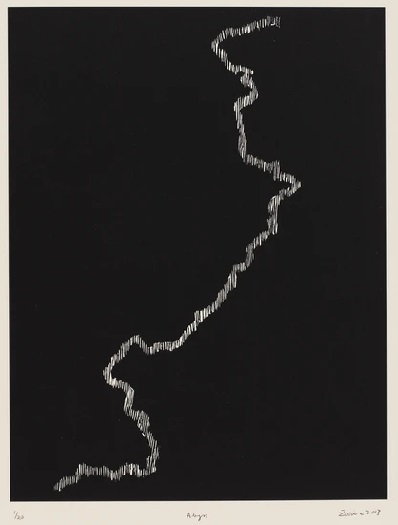
‘Zarina’s use of cartography and her propensity for abstraction in Dividing Line not only demonstrates a unique capacity to both recognise and “map” the tensions and contradictions inherent to the historiography of Partition but also facilitates an endless dialectic around Partition “history” and “memory” through which fixed understandings of Partition can then be challenged and unsettled in powerful and beneficial ways, Tikendra Kumar Sahu Write in his essay, “Zarina Hashmi: A Quest Of Own Space In An Unknown World”.
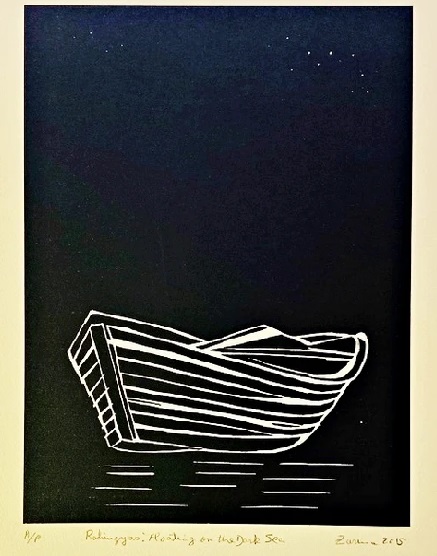
“Everybody can draw, you know—skills don’t make art… Ideas make art,” Zarina said in a 2017 interview with the Metropolitan Museum of Art. “You can teach skills, but you can’t teach ideas,” Zarina stated in the interview. These observations and comments about Art bring her authentic sensibility related to what Art is. Zarina’s Indo-Islamic culture should be preserved as a national heritage, as Urdu poetry does in Islamic history. Exile, alienation and displacement are the significant elements of her Artworks, in which she remained a miniaturist and a borderless human.
She was a member of the Delhi Flying Club, giving her a top view of geography that inspired and reflected a lot in her works. She is always confused about calling a space Home when the person is nomadic. In her works, Zarina starts with words, not with the sketch’s image, and then images follow her thoughts.
Partition, Rohingyas Migration
Why do words frequently come into Zarina’s works? In Urdu Proverbs (2011), Zarina gives a visual memory of the Ten favourite Urdu proverbs; in Abyss (2013), Zarina brings back the same border that carries into a nation and the people. What is lost when this border comes into reality? In Folding House (2013), Zarina used a set of 25 collages on handmade Indian paper stained with Sumi ink and mounted on Arches to tell the story of the Homes in which she lived or saw from the top.
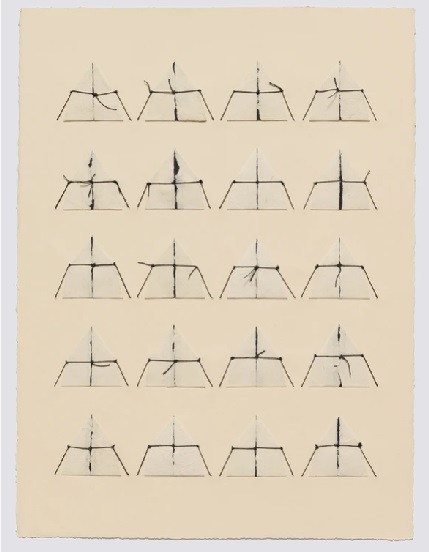
She knows well what migration is, and that is reflected in her work, ‘Rohingyas Floating on the Dark Sea (2015). What the Rohingyans face in our contemporary society is a borderless migration. They are displaced from place to place and floating in our ignorance, and in Sinking Boat with a Heartbeat (2015), Zarina conveys a more realistic approach to the existing issue of migration and sinking boats. How many thousands died in sinking boats while travelling to promising land?
In her last year, Zarina focused on the new form of migration in different countries, and she recollects the pain of displacement in new forms. In her work Refugee Camp (2015), she asks the question of a refugee camp in human culture. In India-Pak Partition, how many refugee camps were pitched in both countries and how many thousands stayed in with hope and hopelessness? She sees that the same allegory happens in a renewed physique and is more painful than in history.
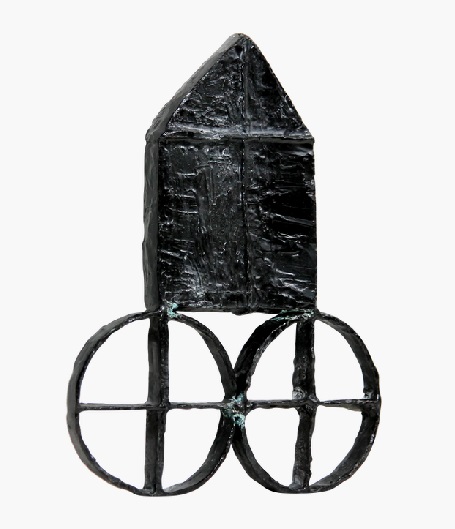
Zarina created her border to erase the wall that made a piece of land into two, and her work is a political statement against Partition, displacement and migration. ‘As artworks, they retain the unique power of turning our attention away from their focus on their beauty into a deeper, perhaps darker, grasp of their melancholy and sense of loss, writes Tikendra Kumar Sahu.
“Home is the centre of my universe; I make a home wherever I am.” “My home is my hiding place, a house with four walls, sometimes with four wheels, ” said Zarina. This statement comes from the sorrow of an artist.
Who is Zarina for India and Pakistan? As an artist, Zarina erased the border between the two countries and gave hope to millions who lost their homeland. The geographical locations in Zarina’s work are connected well with exile, shelter, and displacement, and the internal emotions of migration are hidden in the geometrical patterns.
Forgotten in Aligarh, celebrated in America.. The glowing shadows of Zarina Hashmi: Click here
Feature Image: metmuseum.org
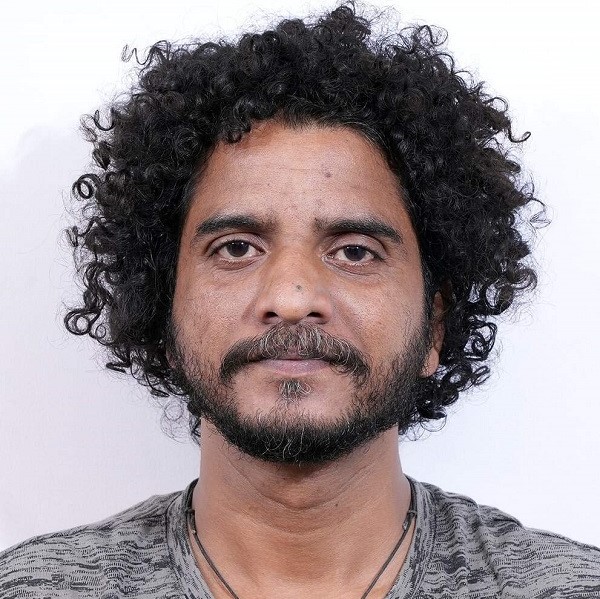
Krispin Joseph PX, a poet and journalist, completed an MFA in art history and visual studies at the University of Hyderabad.

